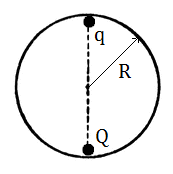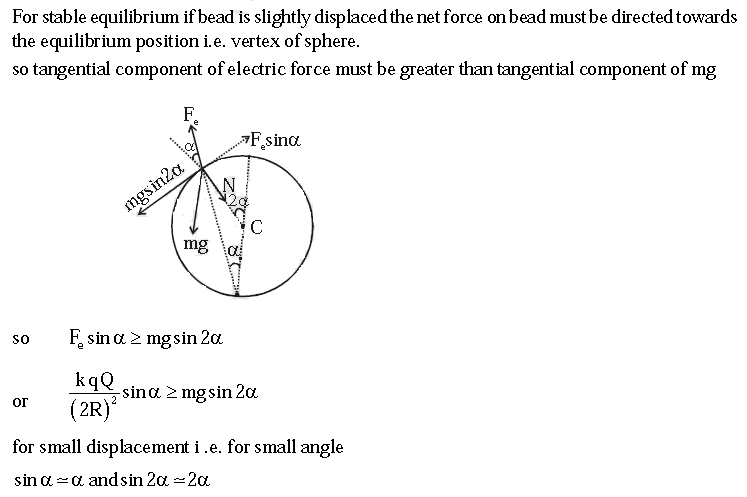Beautifully charged bead
 A little charged bead is inside a fixed and uncharged hollow sphere of radius
R
made of insulating material. The mass of bead is m and charge is
q
. A charge
Q
when kept at bottom of the hollow sphere, the bead is in equillibrium at the vertex of the sphere. If the bead is in stable equillibrium then
Q
≥
A little charged bead is inside a fixed and uncharged hollow sphere of radius
R
made of insulating material. The mass of bead is m and charge is
q
. A charge
Q
when kept at bottom of the hollow sphere, the bead is in equillibrium at the vertex of the sphere. If the bead is in stable equillibrium then
Q
≥
Assume k is an electrostatic constant.
This section requires Javascript.
You are seeing this because something didn't load right. We suggest you, (a) try
refreshing the page, (b) enabling javascript if it is disabled on your browser and,
finally, (c)
loading the
non-javascript version of this page
. We're sorry about the hassle.
1 solution

If change in potential energy is positive, then also the position is stable equilibrium position so using this we get a factor 4 rather than 8.
@Spandan Senapati please help.
Log in to reply
Lets displace by an angle α .Stick to the horizontal passing through centre as the reference for gravitational potential energy.So U ( α ) = ( k q Q / 2 R ) s e c α / 2 + m g R c o s α .Now differentiate wrt α and use approximation .You will get Q > = 8 m g R 2 / k q
Log in to reply
Thanks bro, I did a bad mistake, took angle subtended at arc also to be alpha, I was sleepy at morning :P
Yes d / d x ( d U / d x ) > 0 .I too took the same that displacements are in vertical direction rather its along the sphere itself.So Write the potential energy and see you will get it.